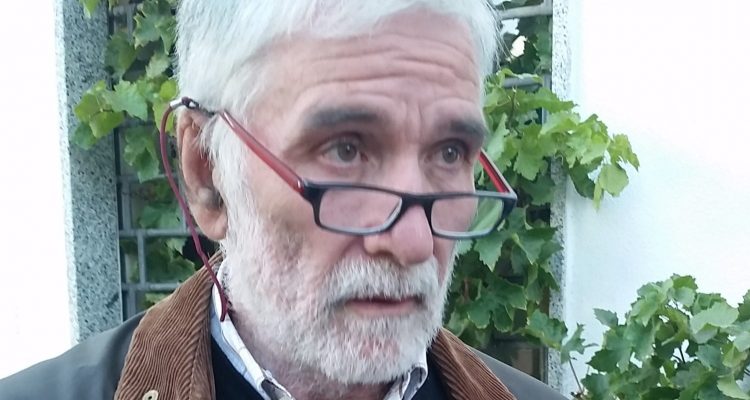For a few days this October I was invited to visit Sardinia, the second largest island in the Mediterranean, a couple hundred miles southwest of the Roman coast. In Sardinia, scientists are now studying Cannonau, a native red wine, believing it could be a major reason why this part of Italy is a “Blue Zone” – the global term for an area where people live healthy, measurable longer lives; in this region we find both men and women living active lives into their 100s. (Cannonau is very high in polyphenols, the antioxidant compounds believed to contribute to some of wine’s observed health benefits.)
Will we live healthier and longer lives if we start consuming more of these wines? And if we demand Cannonau will that lead to more being available worldwide, allowing more people around the world to have longer and healthier lives?
What is Cannonau, anyhow? I was surprised to learn this mysterious grape that the Sardinians call “cannonau” is actually grenache, aka garnacha in Spain. This Sardinian version of the grenache grape makes a medium-to-light bodied red wine with floral as well as saline aromas, solid red fruit flavors on the palate, some bright acidity and a longish finish without a lot of tannin. Cannonau wine pairs well with many foods from fresh seafood to prosciutto and grilled sausages, including local specialties like vegetable fritters, fireplace-roasted suckling pig or the famous Sardinian Pecorino cheese.
 Cannonau grapes make up nearly 30% of Sardinia’s production and they are traditionally grown on alberello or bush vines. Though some producers are now training their vines in modern systems (with Guyot style stakes and wires) low yields and sustainable agriculture seem to be a priority for all growers — only practical in this dry climate. There’s also a trend toward organic and even biodynamic practices here.
Cannonau grapes make up nearly 30% of Sardinia’s production and they are traditionally grown on alberello or bush vines. Though some producers are now training their vines in modern systems (with Guyot style stakes and wires) low yields and sustainable agriculture seem to be a priority for all growers — only practical in this dry climate. There’s also a trend toward organic and even biodynamic practices here.
Most of the grape growers have small plots of a couple acres or so, and many have banded together into different cooperatives; currently Sardinia’s Cannonau consorzio [association] has 1,000 growers as members, and only 19 wineries.
Cannonau wines must be made with 85% of this native grape; Cannonau classico wines, which can only be made in certain Sardinian provinces, must be 100% cannonau. In both cases, the more successful wines, I found, were aged in fairly neutral containers; these days that means either stainless steel tanks or traditional, large Slavonian oak vats of 500, 1,000 or even 1500 liters (130 to 400 gallons). Wines made this way had lightly floral aromas and plentiful red fruit on the palate.
 In terms of altitude, the higher the vineyards, the more complex the aromas and flavors; cannonau is altitude sensitive and a thousand feet can make a big difference. Grapes from the lowest vineyards (up to 200 meters, or 650 feet) make a wine that is best consumed young, in the first couple years after harvest. Wines made from grapes grown at higher altitudes (up to 850 meters, or 2,780 feet) have deeper colors, more body, and more ageing potential.
In terms of altitude, the higher the vineyards, the more complex the aromas and flavors; cannonau is altitude sensitive and a thousand feet can make a big difference. Grapes from the lowest vineyards (up to 200 meters, or 650 feet) make a wine that is best consumed young, in the first couple years after harvest. Wines made from grapes grown at higher altitudes (up to 850 meters, or 2,780 feet) have deeper colors, more body, and more ageing potential.
Grapes have been grown on this island for thousands of years, and cannonau has been here for hundreds. Until the 1950s, Cannonau was mass-produced for local consumption. Since then, wine producers have been improving their vineyards and winemaking techniques, with a view to participating in the expanding world wine market. Unfortunately, this means that today, many are experimenting with ageing their wines in oak. After tasting dozens of Cannonau wines I was thankful that new French oak barrels are prohibitively expensive for most cooperatives and small wineries. Because when new Cannonau wine is poured into the smallest new French oak barrels (around 200 -225 liters or 52-60 gallons) the wood tends to overwhelm the wine in every aspect from aroma to color to flavor and tannin.
Renato Loss, winemaker for the large, 60-year-old cooperative Antichi Poderi Jerzu, believes that Cannonau’s future is as an everyday wine. In ten years, he thinks, the winemakers will settle down and find their best wines to be lower in alcohol – closer to 13% than the current 15%. Loss looks for floral and fruity, easy drinking wines, and thinks people should look at Cannonau in terms of “I like this wine. I’ll drink this wine. Period.”
As Cannonau wines trickle into the US, this is your chance to sample them and decide which are the best. And if we get enough Cannonau into us, maybe we will start living to be healthy 100-year-olds. And so will the rest of the world: changing human history, one wine at a time?

